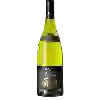
Winery SauvionLes Glaneuses Quincy
This wine generally goes well with vegetarian, rich fish (salmon, tuna etc) or shellfish.
Food and wine pairings with Les Glaneuses Quincy
Pairings that work perfectly with Les Glaneuses Quincy
Original food and wine pairings with Les Glaneuses Quincy
The Les Glaneuses Quincy of Winery Sauvion matches generally quite well with dishes of rich fish (salmon, tuna etc), shellfish or vegetarian such as recipes of pasta with tuna and laughing cow, fish and shrimp wok with curry or quiche with bacon and gruyère cheese.
Details and technical informations about Winery Sauvion's Les Glaneuses Quincy.
Discover the grape variety: Muscardin
Muscardin noir is a grape variety that originated in France (Vaucluse). It produces a variety of grape specially used for wine making. It is rare to find this grape to eat on our tables. This variety of grape is characterized by bunches of medium size, and grapes of medium caliber. The Muscardin noir can be found in several vineyards: South-West, Cognac, Bordeaux, Rhône valley, Provence & Corsica, Loire valley, Savoie & Bugey, Beaujolais, Languedoc & Roussillon.
Informations about the Winery Sauvion
The Winery Sauvion is one of of the world's great estates. It offers 94 wines for sale in the of Quincy to come and discover on site or to buy online.
The wine region of Quincy
The wine region of Quincy is located in the region of Centre Loire of Loire Valley of France. Wineries and vineyards like the Domaine Henri Bourgeois or the Les Domaines Tatin produce mainly wines white, red and pink. The most planted grape varieties in the region of Quincy are Chenin blanc, Cabernet franc and Pinot noir, they are then used in wines in blends or as a single variety. On the nose of Quincy often reveals types of flavors of grapefruit, kiwi or stone and sometimes also flavors of oak, grass or apricot.
The wine region of Loire Valley
The Loire Valley is a key wine region in western France. It follows the course of the Loire River on its Long journey through the heart of France, from the inland hills of the Auvergne to the plains of the French Atlantic coast near Nantes (Muscadet country). Important in terms of quantity and quality, the region produces large quantities (about 4 million h/l each year) of everyday wines, as well as some of France's greatest wines. Diversity is another of the region's major assets; the styles of wine produced here range from the light, tangy Muscadet to the Sweet, honeyed Bonnezeaux, the Sparkling whites of Vouvray and the juicy, Tannic reds of Chinon and Saumur.
The word of the wine: Food and wine pairing
It is the set of techniques that allow for the pleasant combination of food and wine. Food and wine pairing is based on a few basic principles, such as similarity, complementarity or contrast, and involves all the elements that make up the wine and the food (flavours, textures, aromas, etc.).










